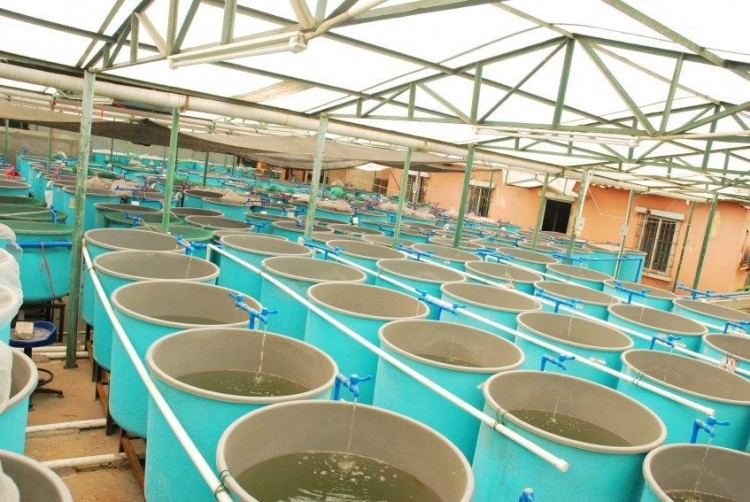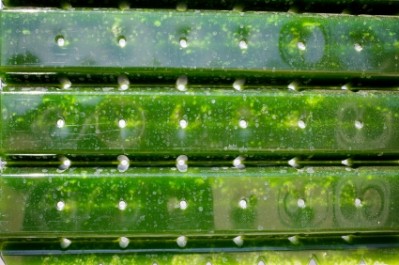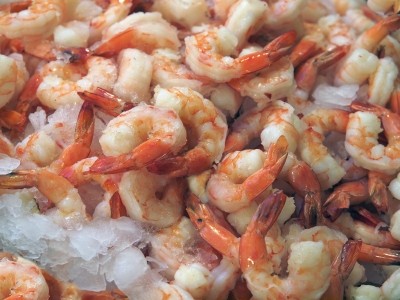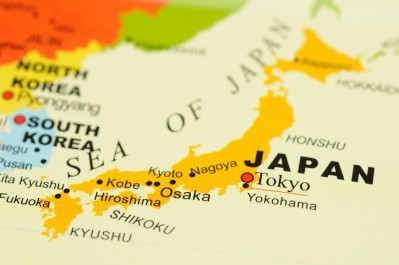Additive methionine may boost farmed shrimp performance, survival

A team of researchers from Brazil and Germany examined the interaction of dietary methionine (Met) levels and shrimp stocking density on growth and performance of young shrimp. Results from the trial using a green-water system are set to be published in the journal Aquaculture.
“The objective of the present study was to evaluate the effect of shrimp stocking density and graded levels of dietary methionine over the growth performance of juvenile Litopenaeus vannamei reared under a green-water rearing system,” the researchers said in the study.
There was a feed and density interaction resulting in shrimp with improved body weights, said the researchers. Independently, the increased stocking density altered food conversion ratio (FCR) and improved yield, but limited final body weight. Methionine levels improved survival, feed intake, FCR and yield.
“While Met requirements for L. vannamei has not yet been clearly defined, results from the present study carried out in green water indicates an interaction between dietary Met content and shrimp stocking density driven by availability of natural food,” they said. “When reared under the presence of natural food sources, dietary Met content should vary between 0.72 (1.19% Met + Cys) and 0.81% Met (1.28% Met + Cys) for 50 to 75 shrimp m− 2.”
Why methionine?
In commercial shrimp feeds methionine is thought to be the first limiting amino acid, said the researchers.
Feed formulators often use intact sources of methionine in shrimp feed, they said. But with the move away from fishmeal use and alternative protein sources, feeds are anticipated to draw more heavily upon crystalline amino acids, including methionine.
The methionine levels needed for production of two common commercially raised shrimp – Kuruma shrimp and the black tiger shrimp have been studied, they said. “Some studies have shown that dietary methionine requirement of the Pacific white shrimp, Litopenaeus vannamei, may range from 1.9 to 2.9% of the crude protein ( Fox et al., 2010 and Lin et al., 2015),” they added.
But amino acid needs of shrimp are commonly explored in clear-water systems with limited options for naturally available food sources, they said. But exogenous factors like feeding regime, stocking density or water quality may alter amino acid requirements.
Little research has been done to examine these interactions in penaeids, said the researchers. The current study aims to add to that knowledge.
Trial details
In the trials, shrimp were given one of five diets for 70 days, said the researchers. The diets included increasing amounts of methionine (Met) from 0.48, 0.62, 0.72, 0.81 or 0.94% on a dry matter (DM) basis and Met with Cysteine (Cys) at 0.96, 1.09, 1.19, 1.28 or 1.40% DM.
Diets were composed of minimal fishmeal or marine ingredients and more soy-based proteins, they said. “The dietary inclusion of salmon by-product meal, sardine hydrolysate, krill meal and salmon oil were locked at 5.00%, 2.00%, 0.50%, and 3.18% of the diet (as is basis), respectively,” they added.
Shrimp were stocked at levels of 50, 75 or 100 animals in outdoor tanks, they said. Shrimp were weighed at the start and end of the trial to establish final body weight, weekly growth rate, specific growth rate (SGR), yield (g of shrimp gain), FCR and survival rate.
A sample was harvested at the start and end of the rearing period for analysis, they said. Also at harvest, algal material, tank accumulation and feed remains were collected.
Samples were checked for dry matter, crude protein, amino acid concentration and natural food, said the researchers.
Results
Both supplemental Met and stocking density were found to influence shrimp growth and development, said the researchers.
“Shrimp stocking density had no significant effect on apparent feed intake. Dietary Met significantly enhanced shrimp apparent feed intake (AFI) at 0.81% Met under 50 and 75 shrimp m− 2,” they said. “On the other hand, FCR deteriorated as stocking density increased.”
“Under 50 shrimp m− 2, there was a significant improvement in FCR from 0.48% to 0.94% Met,” they said. “Under 75 shrimp m− 2, a similar effect was observed starting at 0.62% Met.”
Supplemental Met and Met+Cys boosted shrimp survival, apparent feed intake, FCR and yield, they said. But shrimp in the middle stocking density getting the 0.48% Met diet had a decline in survival.
“Growth rate of shrimp was significantly affected by an interaction between dietary Met content and stocking density, being highest in shrimp fed diets with 0.62% Met reared at a stocking density of 50 animals m− 2,” said the researchers. “Within groups of 50 and 100 shrimp m− 2, final shrimp body weight was progressively increased up to 0.72% Met. Within 75 shrimp m− 2, final shrimp weight was highest at 0.81% Met.”
In 50 shrimp systems there was improved FCR from 0.48% Met to 0.94% Met, and in 75 shrimp tanks there was a similar pattern started at 0.62% Met, they said.
Natural food composition was not altered by the trial diets, they said. The highest levels of essential amino acids were found in shrimp caudal muscle tissue and it increased after the trial period.
Source: Aquaculture
Title: Effect of shrimp stocking density and graded levels of dietary methionine over the growth performance of Litopenaeus vannamei reared in a green-water system
DOI: published online before print: 10.1016/j.aquaculture.2016.05.024
Authors: Felipe Façanha, Adhemar Oliveira-Neto, Claudia Figueiredo-Silva, Alberto Nunes,













